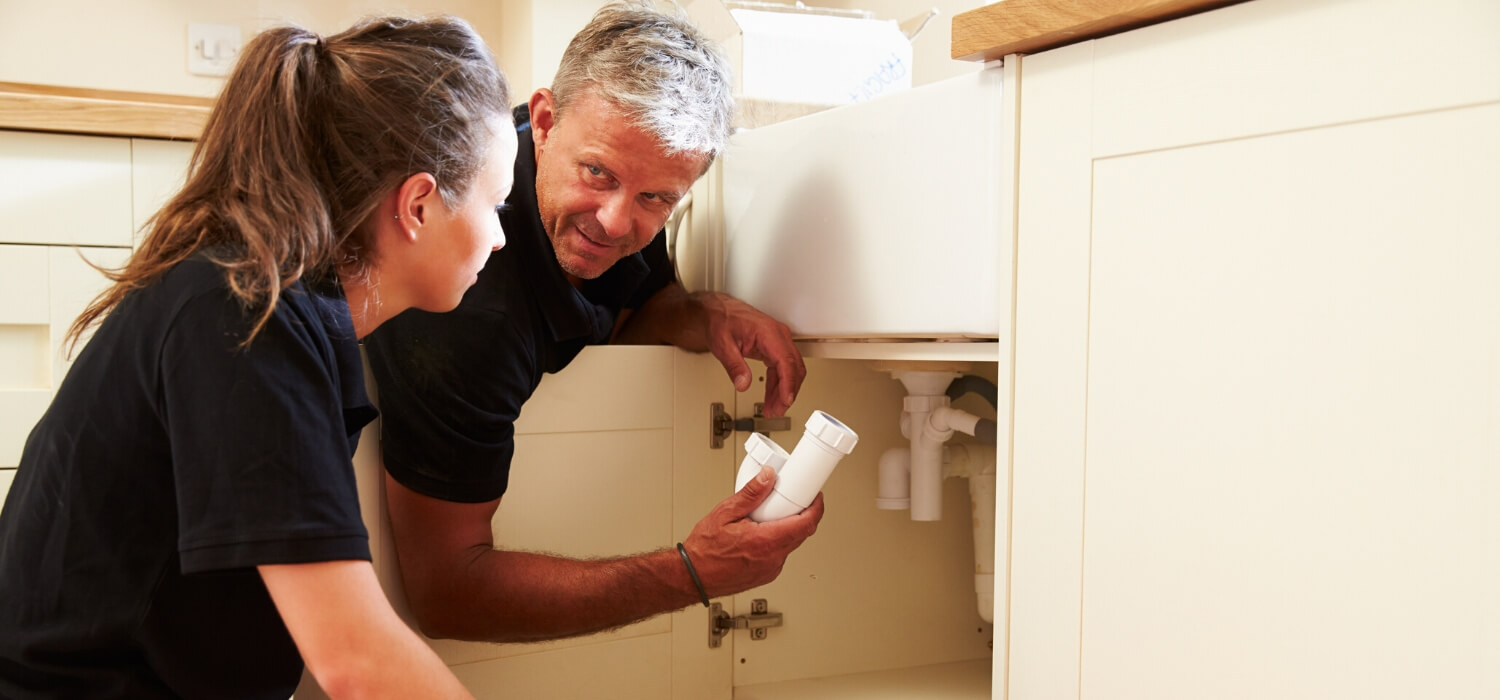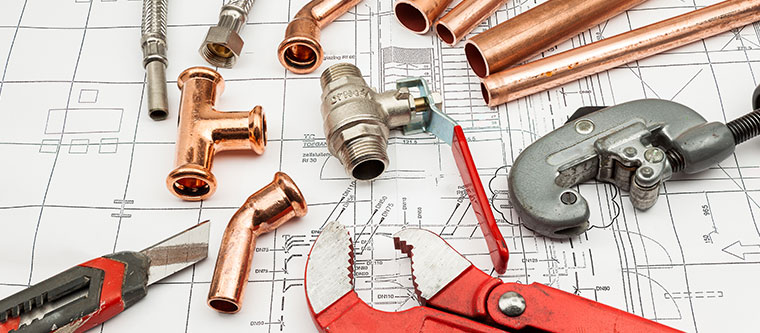Structure of Your Home's Plumbing System: Why It Matters
Structure of Your Home's Plumbing System: Why It Matters
Blog Article
This post directly below in relation to Plumbing Installation 101: All You Need to Know is incredibly remarkable. You should keep reading.

Understanding just how your home's plumbing system functions is vital for every single homeowner. From providing clean water for alcohol consumption, cooking, and showering to safely eliminating wastewater, a well-maintained pipes system is essential for your family's wellness and comfort. In this thorough guide, we'll check out the intricate network that makes up your home's plumbing and deal tips on upkeep, upgrades, and handling typical concerns.
Introduction
Your home's pipes system is more than simply a network of pipelines; it's an intricate system that guarantees you have access to tidy water and efficient wastewater removal. Understanding its parts and just how they collaborate can aid you prevent expensive fixings and guarantee whatever runs efficiently.
Basic Parts of a Pipes System
Pipelines and Tubing
At the heart of your plumbing system are the pipelines and tubes that carry water throughout your home. These can be made from numerous products such as copper, PVC, or PEX, each with its benefits in terms of sturdiness and cost-effectiveness.
Fixtures: Sinks, Toilets, Showers, and so on.
Components like sinks, toilets, showers, and tubs are where water is used in your home. Comprehending just how these components connect to the pipes system aids in diagnosing problems and preparing upgrades.
Valves and Shut-off Points
Shutoffs manage the circulation of water in your pipes system. Shut-off shutoffs are vital throughout emergencies or when you need to make repair work, enabling you to separate parts of the system without interfering with water circulation to the entire house.
Water System System
Key Water Line
The major water line connects your home to the municipal supply of water or a private well. It's where water enters your home and is distributed to different fixtures.
Water Meter and Stress Regulatory Authority
The water meter procedures your water use, while a stress regulatory authority makes certain that water moves at a safe pressure throughout your home's pipes system, stopping damage to pipelines and components.
Cold Water vs. Warm water Lines
Recognizing the difference in between cold water lines, which provide water straight from the primary, and warm water lines, which bring warmed water from the water heater, assists in fixing and planning for upgrades.
Drainage System
Drain Pipes Piping and Traps
Drain pipelines bring wastewater away from sinks, showers, and toilets to the sewage system or septic system. Catches stop drain gases from entering your home and likewise trap debris that can create obstructions.
Air flow Pipes
Ventilation pipelines enable air into the drainage system, stopping suction that might slow drainage and cause catches to vacant. Appropriate ventilation is essential for maintaining the honesty of your pipes system.
Significance of Correct Drain
Guaranteeing proper drainage protects against backups and water damages. On a regular basis cleaning drains and keeping catches can avoid costly fixings and prolong the life of your plumbing system.
Water Heating System
Sorts Of Water Heaters
Hot water heater can be tankless or conventional tank-style. Tankless heaters warmth water as needed, while tanks store warmed water for instant use.
Updating Your Plumbing System
Reasons for Updating
Upgrading to water-efficient components or changing old pipes can boost water high quality, minimize water bills, and raise the value of your home.
Modern Plumbing Technologies and Their Advantages
Discover technologies like clever leak detectors, water-saving toilets, and energy-efficient hot water heater that can save cash and decrease ecological effect.
Price Considerations and ROI
Compute the upfront expenses versus long-term financial savings when considering plumbing upgrades. Many upgrades spend for themselves with lowered utility costs and fewer fixings.
Exactly How Water Heaters Link to the Pipes System
Understanding just how water heaters link to both the cold water supply and warm water circulation lines assists in detecting issues like not enough warm water or leaks.
Upkeep Tips for Water Heaters
Routinely flushing your hot water heater to remove debris, examining the temperature setups, and evaluating for leaks can prolong its lifespan and enhance power efficiency.
Usual Pipes Issues
Leakages and Their Causes
Leakages can occur as a result of aging pipelines, loose installations, or high water pressure. Attending to leaks immediately prevents water damage and mold development.
Blockages and Blockages
Obstructions in drains and bathrooms are often triggered by purging non-flushable products or a build-up of grease and hair. Using drain displays and being mindful of what decreases your drains pipes can avoid clogs.
Indicators of Plumbing Troubles to Watch For
Low tide stress, slow drains pipes, foul odors, or abnormally high water bills are indications of possible plumbing issues that need to be addressed promptly.
Plumbing Upkeep Tips
Routine Examinations and Checks
Set up annual pipes evaluations to capture concerns early. Look for signs of leaks, deterioration, or mineral build-up in faucets and showerheads.
DIY Upkeep Tasks
Straightforward tasks like cleaning faucet aerators, looking for bathroom leakages making use of dye tablet computers, or shielding exposed pipelines in cold climates can avoid significant pipes concerns.
When to Call a Specialist Plumbing Professional
Know when a plumbing issue needs expert know-how. Trying complex repairs without correct expertise can lead to more damage and higher repair costs.
Tips for Decreasing Water Usage
Straightforward habits like fixing leaks quickly, taking shorter showers, and running full tons of washing and meals can conserve water and reduced your energy expenses.
Eco-Friendly Plumbing Options
Consider lasting pipes materials like bamboo for flooring, which is durable and eco-friendly, or recycled glass for countertops.
Emergency situation Readiness
Steps to Take During a Pipes Emergency situation
Know where your shut-off shutoffs are located and how to switch off the water system in case of a burst pipe or significant leak.
Importance of Having Emergency Situation Get In Touches With Handy
Maintain get in touch with info for neighborhood plumbing professionals or emergency solutions easily offered for quick feedback during a plumbing situation.
Ecological Effect and Conservation
Water-Saving Fixtures and Devices
Mounting low-flow taps, showerheads, and toilets can significantly reduce water use without compromising performance.
DIY Emergency Situation Fixes (When Applicable).
Momentary repairs like making use of duct tape to patch a dripping pipe or placing a pail under a leaking faucet can minimize damages up until a professional plumbing technician arrives.
Final thought.
Understanding the makeup of your home's plumbing system empowers you to keep it efficiently, conserving time and money on fixings. By complying with regular upkeep routines and remaining informed concerning contemporary plumbing modern technologies, you can ensure your plumbing system runs effectively for years ahead.
HOW YOUR PLUMBING SYSTEM WORKS
Which Pipes Do What?
Blue lines = fresh water supply entering the building Red lines = hot water supply entering the building Grey lines = pipes carrying waste away from the building and venting pipes carrying gases away from the building (through the roof) YOUR MAIN PLUMBING SYSTEMS
There are two main plumbing systems that support your home s basic plumbing needs one that brings clean water into your home, and one that sends dirty water away from your home. Connected to the toilet, bath, shower, and other faucets in your home, these two systems keep your water flowing in the right directions.
ACCESSING FRESH WATER
Fresh and clean water is brought into your home through the main water supply line . Filtered through one pipe, this water is pressured to flow into the various fixtures in your home at any given time.
This water can be sourced from a well located on your property, a pond or river (mostly cottages), or, as in most cases, from the city s municipal water treatment centre. However, it is important to note that water that is untreated, such as the water siphoned from ponds or rivers, may not be safe to drink. Personal water supplies always need to be treated for hardness and contaminants before consumed.
MUNICIPAL WATER SUPPLIES
Improve taste and odour Remove sediment Eliminate hardness Reduce chlorine COLD WATER SUPPLY VS. HOT WATER SUPPLY
Cold water flows into your home or building through the service line, which then distributes hot or cold water to your fixtures. This line is most commonly run through a central column that runs floor to floor. Hot water runs in short and straight pipes as the longer the pipeline, the more heat that will be lost in the transfer. Having shorter pipes also allows residents to access hot water more quickly.
WASTE WATER SYSTEM
Your wastewater system is divided into two parts pipes that send wastewater away from your home and venting pipes that send sewer gas away from your home. Sewage water travels through pipes that flush the water and waste towards local sewers that are operated and managed by your city or town. Most sewer systems rely on gravity to move the wastewater to where it needs to go.
The further away from your toilet or sink, the larger wastewater pipes become. This allows for waste to be disposed of from various parts of your home or business at once without pipe blockages. The angle and flow of these pipes are also essential for keeping your waste pipes clear of build up.
https://harrisplumbing.ca/how-your-home-plumbing-system-works/

I discovered that content on Understanding Your Home's Plumbing Anatomy when looking around the internet. Enjoyed reading our article? Please quickly share it. Help somebody else check it out. I cherish your readership.
Visit Url Report this page